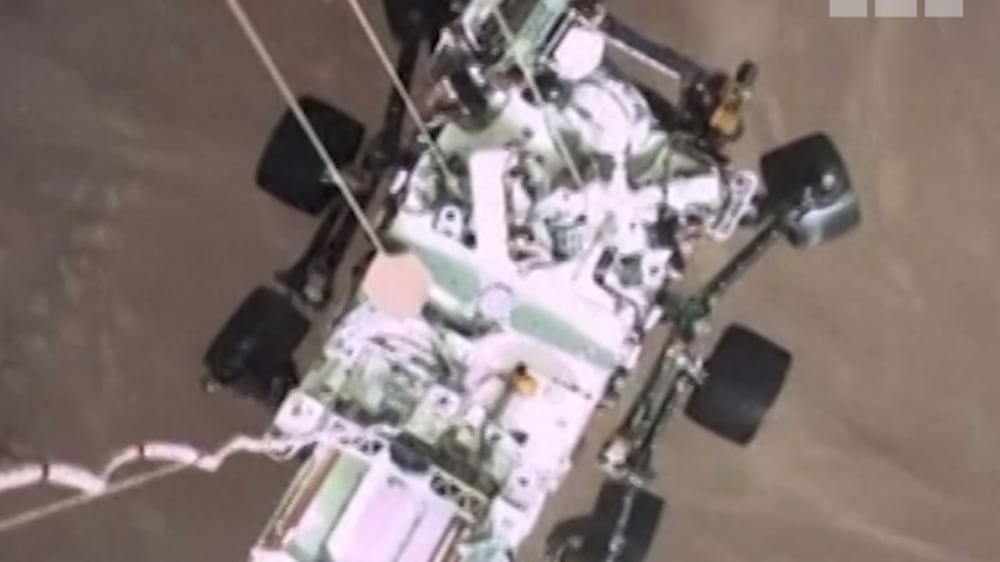Nasa has made significant progress on a rocket that it hopes will eventually launch from the surface of Mars to bring back rock samples to Earth.
The Mars Ascent Vehicle has been in development by the US and European space agencies for the past few years as a follow up mission to Perseverance, a rover that is collecting Martian surface samples.
It will be the first time a rocket takes off from another planet if all goes to plan.
Nasa said on Monday that engineers had carried out successful tests of the vehicle’s rocket motors – a crucial step in ensuring that technology can lift off from the surface.
“Nasa’s Mars Ascent Vehicle recently reached some major milestones in support of the Mars Sample Return programme,” the space agency said.
“The team developing Mav conducted successful tests of the first and second stage solid rocket motors needed for the launch.
“Mars Sample Return will bring scientifically selected samples to Earth for study using the most sophisticated instrumentation around the world.”
The Perseverance rover, which is part of the most expensive Mars mission to date with a price tag of $2.7 billion, landed on the Red Planet in February 2021.
It has been collecting rock and soil samples from different locations, including during its exploration of an ancient river delta that could possibly reveal the early evolution of Mars and ancient life.
Nasa and the European Space Agency hope that Mav could launch in June 2028, with samples set to arrive on Earth in the early 2030s.
“For the Mav to be successful, the team performs extensive testing, analysis and review of Mav’s design and components,” Nasa said.
A complex plan to bring back Mars samples
An intricate plan has been created to make the return mission a success, which also involves a lander and an orbiter that would help the rocket touch down softly on the surface and then deliver the materials in the planet's orbit.
Mav will launch from Earth aboard the Sample Retrieval Lander, which will embark on a two-year journey to Mars and spend a year collecting samples from Perseverance.
The retrieval lander will have a “transfer arm” that will load the samples on to the nose of the rocket, which will then launch from the surface of Mars and into its orbit.
New footage shows the Perseverance rover's final descent to Mars

Mav will then release the sample container to an orbiter around Mars, called the Earth Return Orbiter, so that it can bring the materials back to Earth.
Nasa said the recent rocket motor test was a major step forward in making the mission a reality.
“This test demonstrates our nation has the capacity to develop a launch vehicle that can successfully be lightweight enough to get to Mars and robust enough to put a set of samples into orbit to bring back to Earth,” said Benjamin Davis, the propulsion manager of Mav.
“The hardware is telling us that our technology is ready to proceed with development.”
Why bring back samples from Mars?
Scientists are interested in learning about the evolution of Mars because it is believed that the planet sustained life a long time ago.
Orbiters and rovers have found dried-up river deltas that are believed to have once flowed with water.
Mars eventually became inhabitable because solar wind destroyed its atmosphere, causing it to become a hostile environment for any kind of life.
Studying the Red Planet could help scientists learn more about Earth and its evolution.
Mars has been studied through data sent back by spacecraft and rovers, but actual samples have never been brought to Earth.







